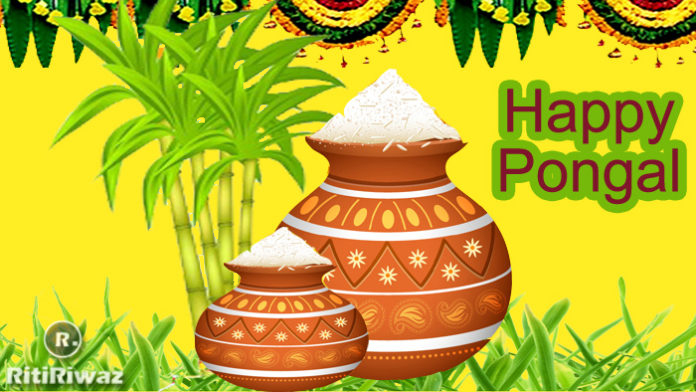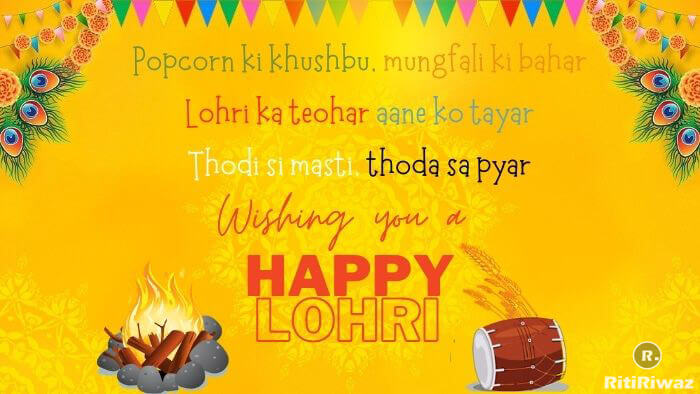Hemis Festival – Ladakh
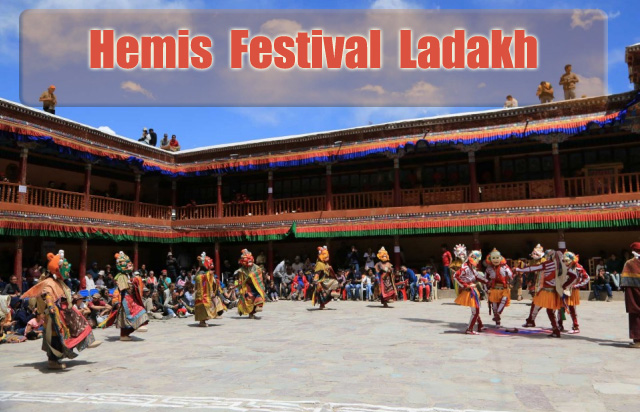
Hemis Festival is held every year in Ladakh on the 10th day of the Tibetan lunar month, celebrated as the birthday of Padmasambhava (Guru Rimpoche), the founder of Tibetan Buddhism.
Hemis festival is the most famous Buddhist religion festival not only in Nepal but of the whole Buddhist world. Hemis Gompa thus becomes a center of activity during the festival.
The Hemis Monastery has the largest silk embroidered brocade in Ladakh, which is unfurled, once in 12 years, in the year of the Monkey. Also known as the largest Thangka in Ladakh, which was last unfurled in 2016.
The hall Dukhang is also used as a “green room” by the dancers during the festival. The temple is known as Tshogkhang. The verandahs have a surfeit of frescoes, among them the Buddhist ‘wheel of life’ (Kalachakra) and the lords of the four quarters, besides the prayer wheel.
The monastery is divided into two parts main: the assembly hall on the right and the temple on the left. Sacred dances and musical performances of character religious are the highlights of the celebrations. During the festival, lamas and monks gather to perform in the sacred dance of the mask, which aims to celebrate the victory of good over evil.
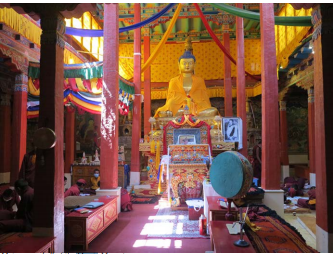
Ladakh during Hemis festival gets into the festival spirit and you can see the flamboyant, vibrant, and varied tribes from across the region, all dressed in their traditional best, as they perform at Hemis Monastery, participate in festival events and break into spontaneous dances. The resident Lamas perform sacred masked dances.
The festival in Ladakh showcases the best of the cultural heritage of the region. Splendid masked dances are performed to the accompaniment of cymbals, drums, and longhorns. A colorful fair, displaying some beautiful handicrafts, is the special highlight of the festival.
During the festival, the locals get dressed up in traditional clothes, where men wear cummerbunds and women wear vibrant headgears and loads of jewelry. The Lamas perform a sacred masked dance, known as Chaam while they are accompanied by musical drums, longhorns, and cymbals. This is an extremely well-known festival.
In 2023 Hemis festival will be celebrated from 28th June – 29th June.
Celebration

There is no better time to visit Ladakh than during the Hemis Festival, located at approx 40 km from Leh, Hemis was built in 1630 during the reign of Sengge Namgyal, an illustrious and important ruler; is the gompa richest, most famous, and largest in Ladakh.
The courtyard becomes the stage of the festival that celebrates the anniversary every year of the birth of Guru Padmasambhava, spiritual leader and founder of Tantric Buddhism in Tibet, it is believed he has fought with demons for the safety of the local population.
Celebrations begin on the 10th day of the lunar month Tibetan, which is also called Tse-Chu in the local language. For the occasion, locals dress their clothes in more traditional ones. The lamas, called “chhams”, perform splendid masked dances and sacred representations, accompanied by cymbals, drums, and longhorns; they wear colorful costumes, like long brocade dresses highlighted by picturesque hats. Their masks represent various guardian deities of the dugpa order, of which Hemis is the principal center in Ladakh.
The dances end with the ritual destruction of a sacrificial offering, it is a human figure made of pasta from the leader of the Black Hati dancers, the pieces are then dispersed in four directions. ‘Rinpoche’ or the lama leader presides over the function, the lamas recite the mantras associated with the various episodes of the “Chhams”, the so-called “devil dances” constitute an important element in the social entertainment of the ladakhis. The great joy created by these masks with their songs and dances, which invariably recount the victory of good over evil, is maintained by the consumption of huge bowls of “chang”, the traditional liqueur of the country.
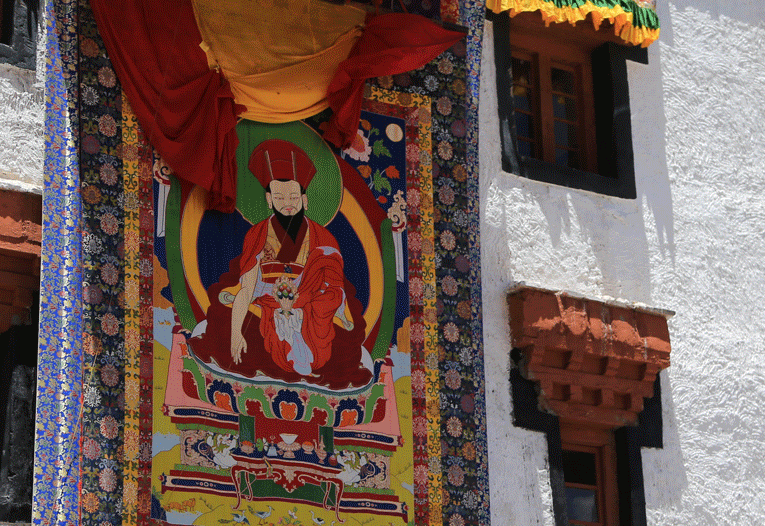
Every 12 years, in the Tibetan year of the monkey, the richly adorned ‘Thanka’ is exhibited with pearls and semi-precious stones; it is two stories high and depicts Padmasambhava. It is a colorful party and on the occasion, they come exposed beautiful craft items; it is the highlight of the festival and here you can buy many souvenirs.
The festival offers the opportunity for all the inhabitants of the village and families to meet and socialize. The brass trumpets, even three meters long, are played by the monks and the whole event turns into a big party, it’s a show not to be missed.
Suggested Read: List Of Festivals Celebrated In The Month Of July





